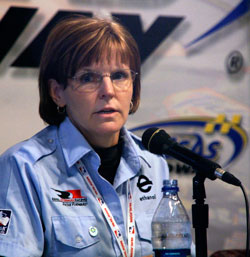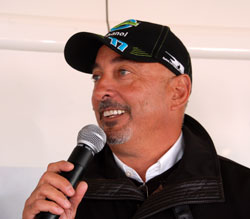 The state of sustainable agriculture in developing countries will be one of the main issues addressed at the BIO International Convention this summer. The Biotechnology Industry Organization is hosting the convention in San Diego from Tuesday, June 17 through Friday, June 20.
The state of sustainable agriculture in developing countries will be one of the main issues addressed at the BIO International Convention this summer. The Biotechnology Industry Organization is hosting the convention in San Diego from Tuesday, June 17 through Friday, June 20.
Biotechnology leaders from around the globe will be descending upon San Diego, one of the leading biotech hubs in the world, to discuss the most pressing issues and share their unique perspectives. In addition, there will be a total of 36 regional and country pavilions within the BIO Exhibition with several new pavilions, including Argentina, Brazil, Chile, Dubai, and South Africa.
This year’s convention will focus on the promise of biotech innovation to heal, fuel and feed the world. International case studies on biofuels, biomanufacturing, research funding, and international collaborations will focus on examples from Brazil, China, France, Germany, India, Japan, Korea, North America, Singapore, and Sweden. Two additional breakout session tracks will focus on doing business globally and global health. A session entitled, “The Dynamics of a Globalized World and the Future of the Biotechnology Industry,” will feature international public officials sharing insights on the evolving business landscape.
This year’s keynote speakers include Gen. Colin Powell, J. Craig Venter, Ph.D., and Gov. Arnold Schwarzenegger.Read More




 England’s Dan Wheldon takes the win in Kansas. The No. 9 Target Chip Ganassi Racing Dallara/Honda/Firestone Driver said the race was tight and exciting and, at one point, he said he nearly crashed. But, Dixon said he finally started taking advice on saving his fuel. Instead of getting out in front for most of the race, Dixon said he took every opportunity he could to save on gas.
England’s Dan Wheldon takes the win in Kansas. The No. 9 Target Chip Ganassi Racing Dallara/Honda/Firestone Driver said the race was tight and exciting and, at one point, he said he nearly crashed. But, Dixon said he finally started taking advice on saving his fuel. Instead of getting out in front for most of the race, Dixon said he took every opportunity he could to save on gas.  The recent criticism of ethanol doesn’t sit too well with the chairman of the
The recent criticism of ethanol doesn’t sit too well with the chairman of the  Toni Nuernberg is the newest member of the
Toni Nuernberg is the newest member of the  Just being able to snag a ticket to the race means a huge Indy experience for most racing fans. But, some race-goers are lucky enough to snag tickets for the Hot Lap, taking their Indy experience one step further. The
Just being able to snag a ticket to the race means a huge Indy experience for most racing fans. But, some race-goers are lucky enough to snag tickets for the Hot Lap, taking their Indy experience one step further. The  Team Ethanol Driver Ryan Hunter-Reay knows that the ethanol industry started here, in the nation’s heartland. That’s why he fondly refers to the
Team Ethanol Driver Ryan Hunter-Reay knows that the ethanol industry started here, in the nation’s heartland. That’s why he fondly refers to the  Earlier today, Bobby Rahal addressed the members of EPIC who came out to enjoy the Roadrunner Turbo Indy 300. Rahal said he felt good about today’s race and he was confident in Team Ethanol Driver Ryan Hunter-Reay, despite the tendency for crowding out on the Kansas Speedway’s 1.5 mile oval. There’s already been three delays due to Indy cars bumping and grinding out there on the track. So far, Ryan has avoided the trouble.
Earlier today, Bobby Rahal addressed the members of EPIC who came out to enjoy the Roadrunner Turbo Indy 300. Rahal said he felt good about today’s race and he was confident in Team Ethanol Driver Ryan Hunter-Reay, despite the tendency for crowding out on the Kansas Speedway’s 1.5 mile oval. There’s already been three delays due to Indy cars bumping and grinding out there on the track. So far, Ryan has avoided the trouble. There’s no question that there’s been a media barrage giving ethanol a bad rap. Just today, the Kansas City Star’s
There’s no question that there’s been a media barrage giving ethanol a bad rap. Just today, the Kansas City Star’s